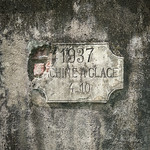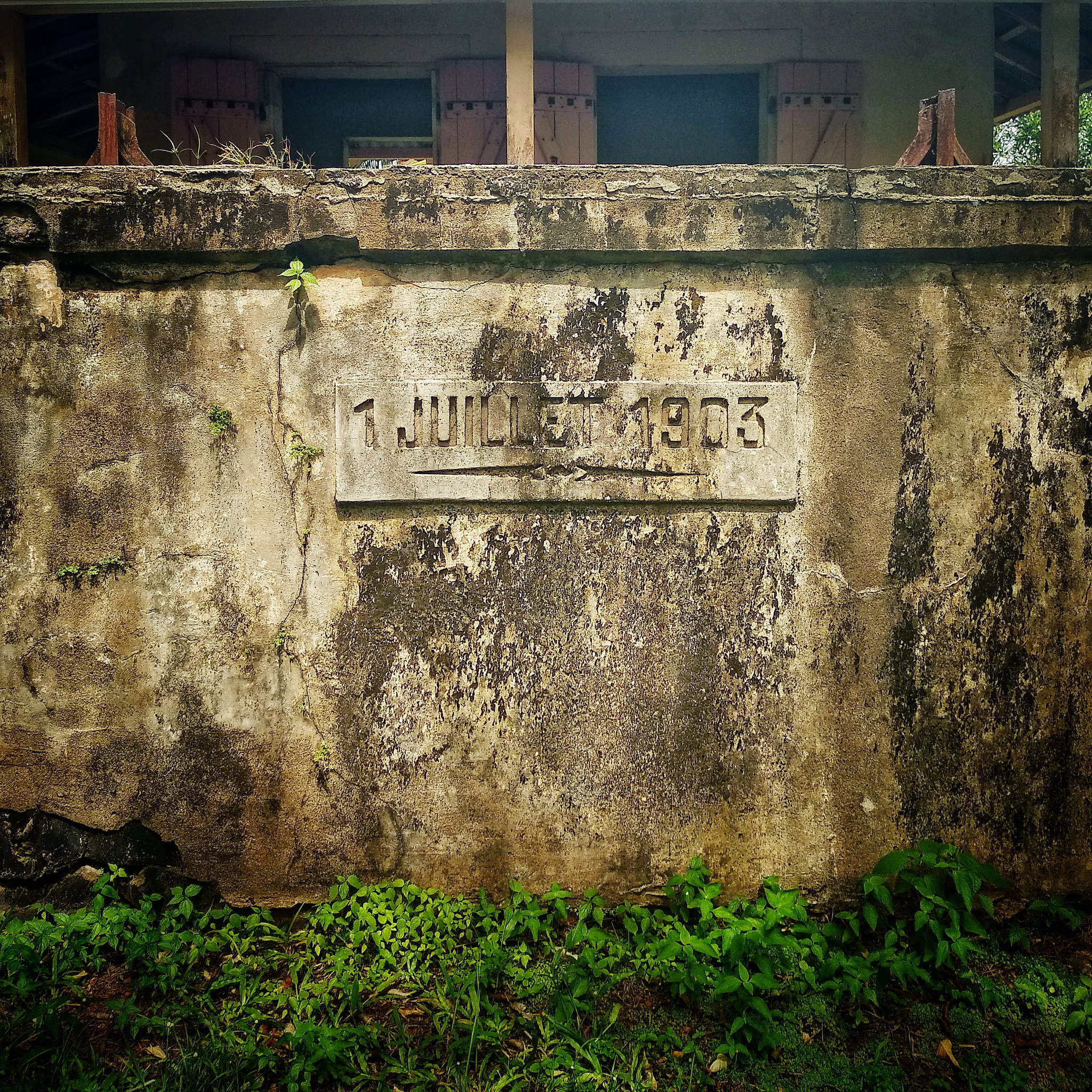Of cheese, wine and borders
Turns out that Brazilians, who can freely travel into Shengen, need a visa for French Guyana, and Natalia didn’t have one.
“Where do we get a Visa?”
“In Paramaribo!”
A few back and forths later, we collectively discovered that Brazilians, under unusual and certain circumstances, can get a transit visa at the border. Our border guard was helpful, but he was nearly overruled by his captain, strongly suggesting that legit Brazilians seldom come this way.
But, we were only going to be helped after the office’s lunch break, meaning we had to wait a full two hours at the police station for the captain to come back from his break. Luckily, I could roam at will, which saw me grab two lovely French baguettes at a local boulangerie, as well as a fine chunk of goat cheese at prices that made me cry inside for what the same would cost in Brazil.
Surinamese and Guyanese also need visas to enter French Guyana, going some way towards explaining why all travellers we saw at the French Guyanese border were European.
Yet, the longboats, piroques, that everyone who doesn’t come with a car, uses to cross the river between Suriname and French Guyana, are terribly easy to get into French territory with, clandestinely. On both sides, going through immigration is optional, and even though we disembarked at immigration on the French side, we accidentally first walked through the exit lane into France, then again in the entry lane. We had to go out of our way to actually have our passports checked, making the requirement of a transit visa the more irksome.
There is practically no public transport in French Guyana. Intercity connections virtually don’t exist, and on the little that does exist, practically no reliable information is available anywhere. And, it’s surprisingly expensive.
The distance from Paramaribo to the border with French Guyana is similar to the distance from the border to Cayenne, but where the Surinamese public bus charges Just over 1 euro, the French charge 30. And, it appears, on the French side, only one bus a day leaves at six in the morning.
Private transport is also available, but in Suriname, this costs under 6 Euros, in French Guyana, it appears, it’s 40.
On top of that, accommodation in French Guyana, particularly in the border town of saint Laurent du Maroni, is painfully expensive.
We decided to rent a car instead, giving us much desired flexibility, which would also come in handy as we were going to visit Devil’s Island, home of the infamous French penal colony off the coast of the town of Kourou. To get there, we had to be in Kourou, an hour’s drive from Cayenne, at 8 in the morning. Literally impossible without your own transport.
And, having our own car meant we could stay on one of Cayenne’s beaches on the edge of town. The sea of the Guyanese coasts is water from the Amazon, pushed by Atlantic currents westwards after leaving the Amazonian delta. As a result, the waters off the Guyanese coast are muddy and quite sweet.
On our trip, the few people we spoke to who had been to French Guyana all complained about the high costs. Some things, like Intercity travel, were indeed crazy expensive, as were beers in pubs and accommodation, but on the whole, we found many things pleasantly cheap; the hypermarkets sell French wines and cheeses at French prices, about half the cost, or less, of what we pay in Brazil. And then there are the fantastic bakeries, where a fabulous breakfast is similarly priced or cheaper, to something less interesting, in Sao Paulo.
One surprise was the large number of Brazilians in the country. According to the French consulate in Brazil, Brazilians from the border region are reasonably free to come and go, and the city is stuffed with Brazilians working in or running small shops, or selling goods in the market.
Not as prevalent, but with a strong presence in and around Cayenne’s city market, is a significant East Asian diaspora, serving extremely popular Vietnamese soups. Possibly, a consequence of several thousand Hmong refugees, from Laos, resettling in French Guyana in the 1970s and 1980s.
Papillon
Devil’s Island most famous prisoner was Papillon, Henri Charrière, who wrote a successful autobiographical work on his time on Devil’s Island, publishing it in 1969. The book was made into a successful film with Steve McQueen and Dustin Hoffman in 1973, then again in 2017 with a lot of actors unknown to me, but also with Rami Malek.
Gripping entertainment, but Charrière’s story was made up. He was imprisoned in French Guyana, but never on Devil’s Island. In addition, there’s strong indication that Charrière based some of his book on a similar story that was published some 30 years earlier.
‘Papillon’ means ‘butterfly’. The sentences of the convicts were often long, and saw a low survival rate. Some of the convicts, in cooperation with the administration, caught butterflies to sell in the international market, both for scientific purposes as well as general collecting.
Failed colonisation
French Guyana is now quite thoroughly integrated into France. De Gaulle shifted the country’s space port from Algeria to French Guyana in the 1960s, which was a resounding success, with a significant portion of the economy now being based on, or connected to, the space station. Though, compared to France, relatively poor, the region also has the highest GDP per capita on the continent. And though there is still some indigenous population left, an independence vote in 2010 was defeated in favour of remaining a part of France.
But, the French were in a much more precarious position a few centuries ago.
When the French lost Canada as a colony, the state looked for an alternative foothold in the Americas, but an effort to colonise Guyana in 1763 failed utterly, with some 10.000 of a party of 12.000 settlers perishing, eventually the remainder being saved after being stranded on what are now the three islands that include Devil’s Island, when the little archipelago became known as the Salvation Islands.
Jockeying, but mostly failing, for increased influence, some French briefly convinced neighbouring Brazilians (or rather, French settlers in neighbouring Brazil), in what is today the state of Amapá, but once was known as Portuguese Guyana, to declare the Republic of Independent Guiana, often referred to by its main city, Counani (or Cunani), surviving from 1886 to 1891. Now, Cunani is all but absent from a map of the area, a tiny village of about 1000 inhabitants.
The local, black, population, preferred French administration, as slavery had already been abolished, there, for decades, whereas in Brazil, it would continue for another few years. In addition, due to the a lack of clarity in the 1713 Treaty of Utrecht, where ‘Japock’ referred to either the river Oiapoque (now the border between Brazil and France), according to most, or was just a native word for ‘river’, according to the French, the French staked a claim to territory that went beyond the conventionally accepted border between the two countries.
However, the venture was mostly instigated by a couple of dubious businessmen, where the ‘president for life’, Jules Gros, a French speculator, had not set foot in the region until two years after being declared president, early on discovering that selling potential investments in gold mines in the Guyanas was more profitable than actually mining for gold.
A few years later, in 1904, a French military officer, Adolphe Brezet, declared himself president of the Free State of Counani.
He had fought the British in the Boer Wars in South Africa, and as a result the Boer Republics kept diplomatic relations with Brezet when he settled in northern Brazil. In fact, it’s possible that Brezet’s name for ‘his’ country was a direct homage to the Orange Free State in what is now South Africa.
In order to boost speculation for investments, Brezet’s men built fifty miles of railway tracks that led nowhere and had no trains running on them. But with no success. Around 1912, activity petered out, with Brezet disappearance from the scene. Brazil never gave much attention to the man or his plans.
One Reply to “Of cheese, wine and borders”
Comments are closed.
































[…] abysmal conditions. The former prison, now a museum, is like a slightly more modern version of Devil’s Island in French Guyana and hopes to become the country’s second World Heritage Site […]